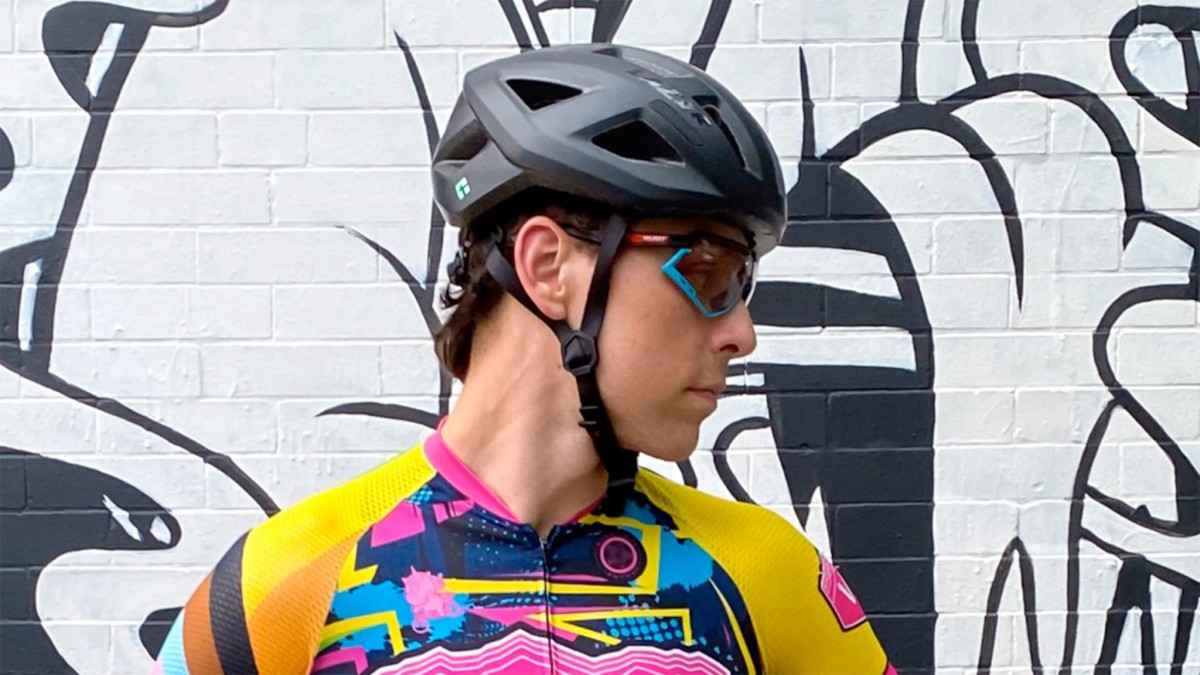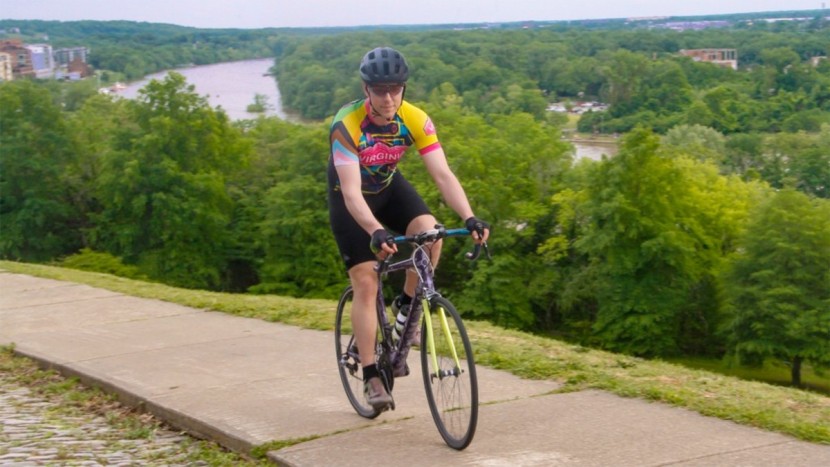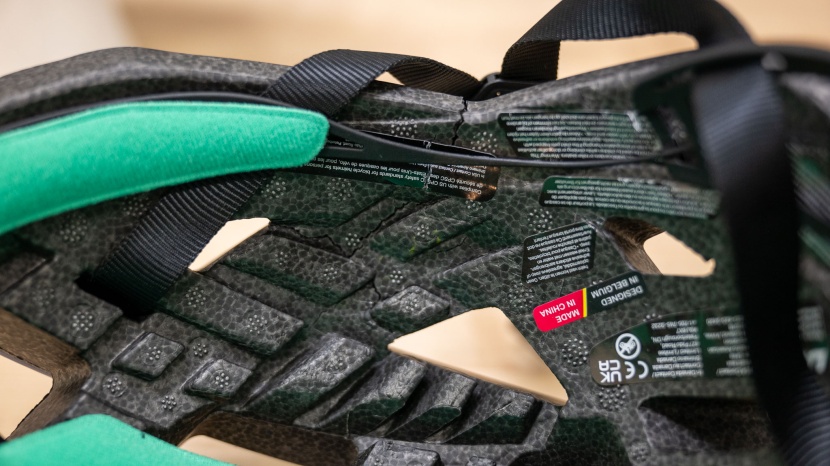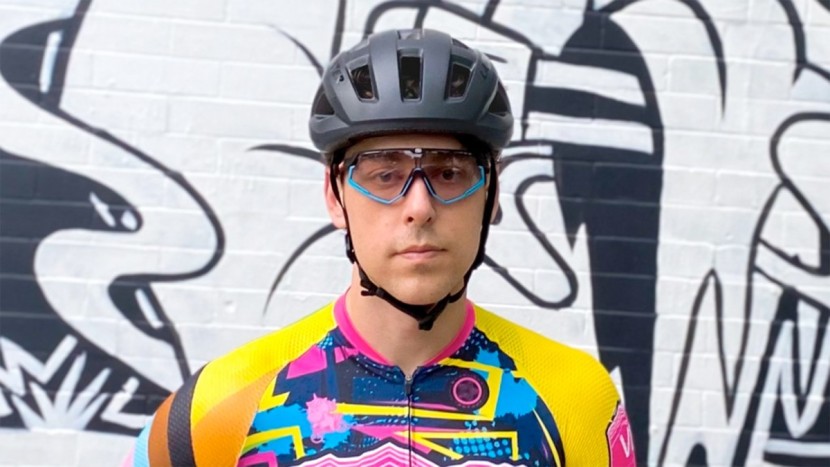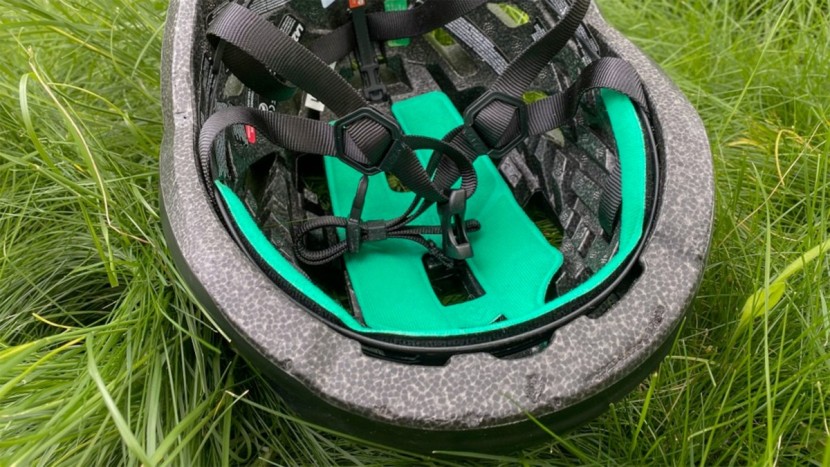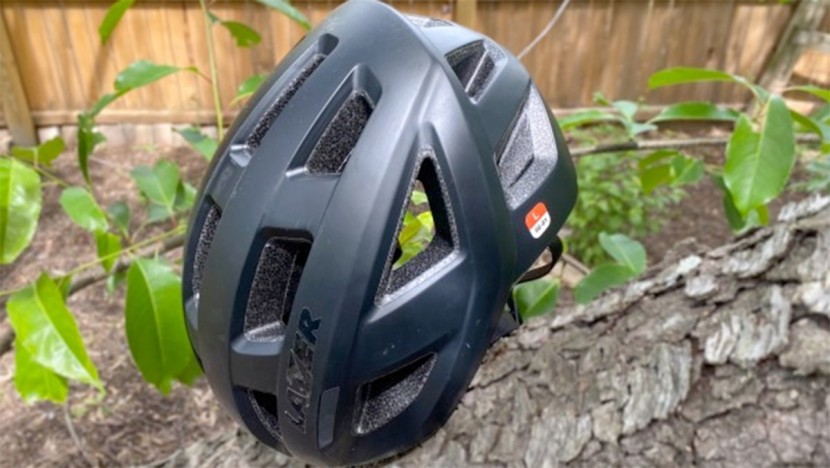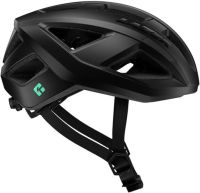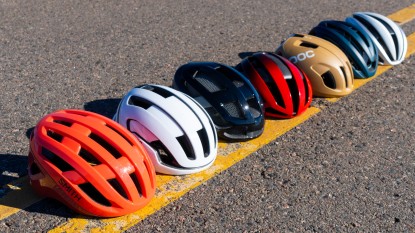
Our Verdict
Our Analysis and Test Results
Low weight and high adjustability are the areas where the Lazer Tonic Kineticore really stands out. It's a very light helmet, even while rolling in at a third of the price of the top-end lids. Those weight savings are noticeable out on the road, reducing neck fatigue. It also has thick contact areas in the head retention system, lessening the pressure point effect on your temples. Most notably, it's wonderfully adjustable. It comes in four sizes rather than the standard three, and Lazer's TurnSys adjustment system easily shifts vertically to wrap around any skull shape.
Impact Test
The Lazer Tonic Kineticore — like nearly all bicycle helmets sold on the market — meets the U.S. and European minimum standards. But to dig deeper into its impact performance, we commissioned some impact tests of our own. We can surmise that this helmet is a good choice for the budget-minded who don't mind slightly lower impact test results.
Slow Impact Test Results
Slow test results for the Lazer Tonic Kineticore were one of the weakest of the entire lineup.
Fast Impact Test Results
Similarly, the fast impact test results for the Kineticore were lower than most of the other helmets in our test field.
The Tonic is one of the few of our lineup that doesn't use Mips licensed technology, but it does utilize something similar called KinetiCore, which is engineered in-house. Lazer markets KinetiCore as built-in crumple zones in the expanded polystyrene foam that makes up the body of the helmet itself. Like Mips, Lazer says that KinetiCore is also designed to allow the helmet to twist slightly independently of the wearer's head. Lazer, as a company, is so invested in the technology that it is planning to phase out all of its Mips helmets for a corresponding KinetiCore model.
Comfort
The Tonic Kineticore is not the most comfortable helmet we tested, but it is just below average in this area, great for a helmet in its price range. The shape is spot-on for those with more rounded heads, though it may be too roomy up top if your head is a bit flat. It narrows more at the temples than some helmets do, too, so if you know that's one of your problem areas, you may want to try one on first to make sure it works and fits well.
We found that the padding is quite soft and squishy, but the fabric Lazer chose to wrap it in doesn't feel great against the ski, and the seam around the edges of the pads is scratchy against your forehead. Fortunately, this is only a problem when putting it on and taking it off; the seam isn't noticeable while riding. The thick, budget straps that Lazer chose for this helmet are standard for this price range, but still disappointing. They absorb sweat readily, making them clammy and slick on a hot ride. The padding, meanwhile, isn't very sweat-absorptive, so be ready to keep wiping your eyes and forehead on the hottest days.
Ventilation
Speaking of sweat, let's talk ventilation. Like most other categories, the Tonic Kineticore's ventilation is middling. It's not great and not terrible. Keeping in mind its significant price discount over our top performers, we're pretty happy with the amount of air rushing through the 28 vents. When riding outdoors, it's noticeably warmer than our top helmet picks, but we still wouldn't hesitate to buy a helmet at this price. While not being exceptionally windy, it's also not terribly hot.
Our indoor testing bore this out. The Tonic Kineticore kept us a couple of degrees warmer in this controlled environment than top performers, but a couple of degrees cooler than the bottom of the list. Like we said, it's in the middle, and that's a good thing.
Usability
Adjustability on the Lazer Tonic Kineticore is excellent. It's available in a huge size range, fitting heads from 52cm all the way up to 64cm. For context, that range is wide enough to fit anyone from an average 7-year-old child to ex-pro baseball player Kevin Mench, nicknamed “Shrek” for having such a big noggin. In addition to this fantastic circumference range, the Tonic Kineticore's vertical fit is easily adjustable using the TurnSys system. Most helmets can be adjusted about 2 centimeters vertically, while the TurnSys moves up and down more than 3. The only slip-up in this category is the chinstrap. It's much too long for most testers, making the strap ends tough to wrangle.
The buckle, straps, and head retention system can all be operated with winter gloves on, making this helmet easier to use in the cold than most. It's a little thing, but being able to tighten, loosen, strap, and unstrap a helmet without removing your gloves is a tiny luxury in the chilly months.
Weight
This is another standout category for the Tonic Kineticore. It comes in lighter than every other helmet we've tested in the last year. It weighs just 240 grams in a size Medium. That makes it 10% lighter than helmets that cost more than three times as much and 10 grams lighter than Lazer's own longtime flagship lid, the Z-1. This lightweight reduces neck strain out on the road and could be one of those vaunted marginal gains you seek in a race. If you're looking just to save weight, this is a top performer.
Close inspection reveals that some of this weight savings has come at the expense of durability. The element of a helmet most prone to damage is the EPS foam, the gray interior that makes up the bulk of the helmet's structure. The Tonic leaves the lower sections of this foam fully exposed, and ours has picked up a few divots while it was traveling in our cars and stored in our sheds.
Should you Buy the Lazer Tonic Kineticore?
If you're looking for a great helmet that costs less than $100, jump on board. If you have an extra-large or extra-small head and struggle to find a good fit, this could be a great choice for you, too. It's neither the most ventilated nor comfortable lid out there, but it's fantastically lightweight and adjustable while being adequately stylish and comfortable. You can't do any better for a helmet at this price, making the Tonic Kineticore stand out as our best budget option.
What Other Road Bike Helmets Should You Consider?
The Tonic Kineticore is a fantastic option for those shopping on a particularly tight budget, but otherwise, it is a middling helmet in most regards. If you have a bit more money to spend, consider this helmet against the Smith Persist Mips, which offers better comfort and ventilation, at a slight weight penalty. Alternatively, the Bell Stratus Mips is another popular lightweight helmet, with a much better independent impact score, for a slightly higher price.
| Awards | Best Helmet on a Tight Budget |
|---|---|
| Price | $80 List Check Price at Backcountry |
Overall Score  |
|
| Star Rating | |
| Bottom Line | Not top in any category but above average in most, this is a good helmet at a great price |
| Pros | Inexpensive, super adjustable, lightweight |
| Cons | Middling ventilation, limited comfort and durability |
| Rating Categories | Lazer Tonic Kineticore |
| Impact Test (30%) | |
| Comfort (20%) | |
| Ventilation (20%) | |
| Usability (15%) | |
| Weight (15%) | |
| Specifications | Lazer Tonic Kineticore |
| Measured Weight | 240g g (Size M) |
| Size Range | 55-59cm (size M) |
| Number of Vents | 18 |
| Mips | No, Kineticore |
| Sizes Available | S, M, L, XL |


